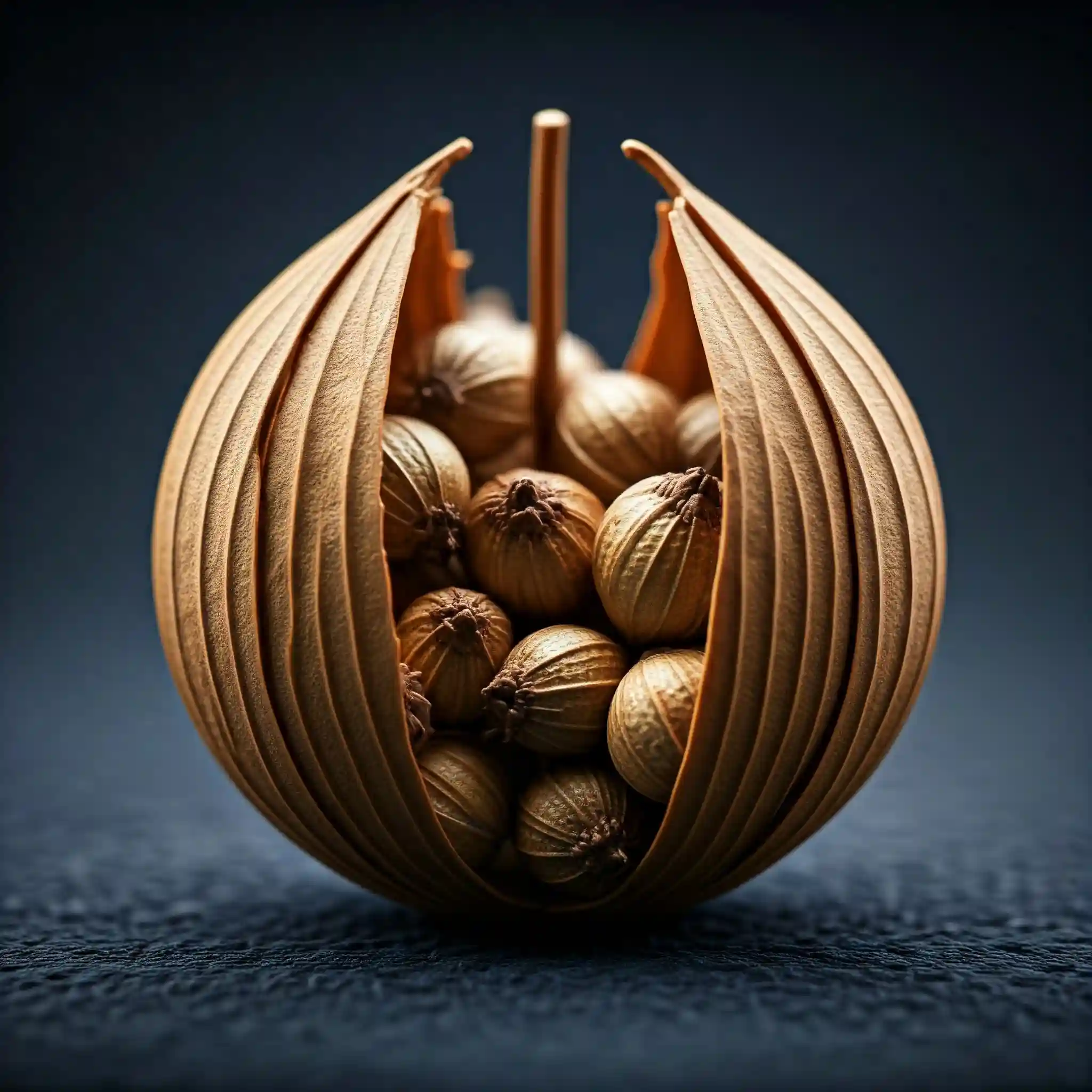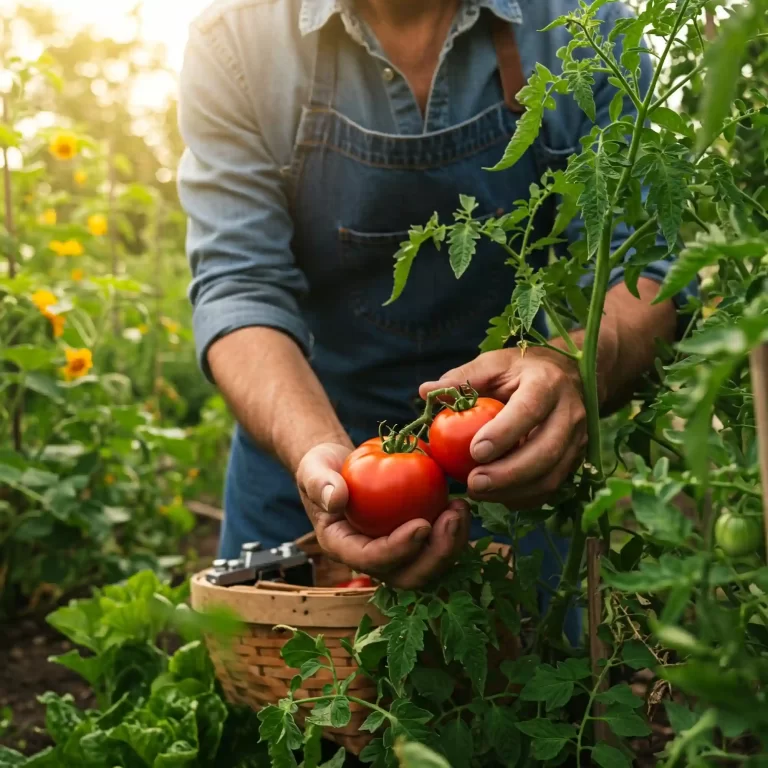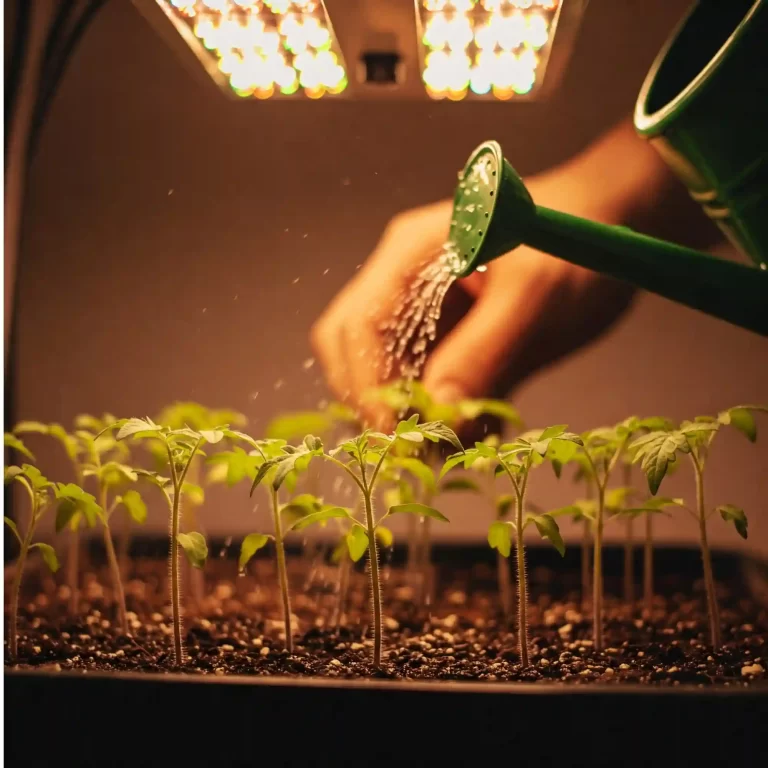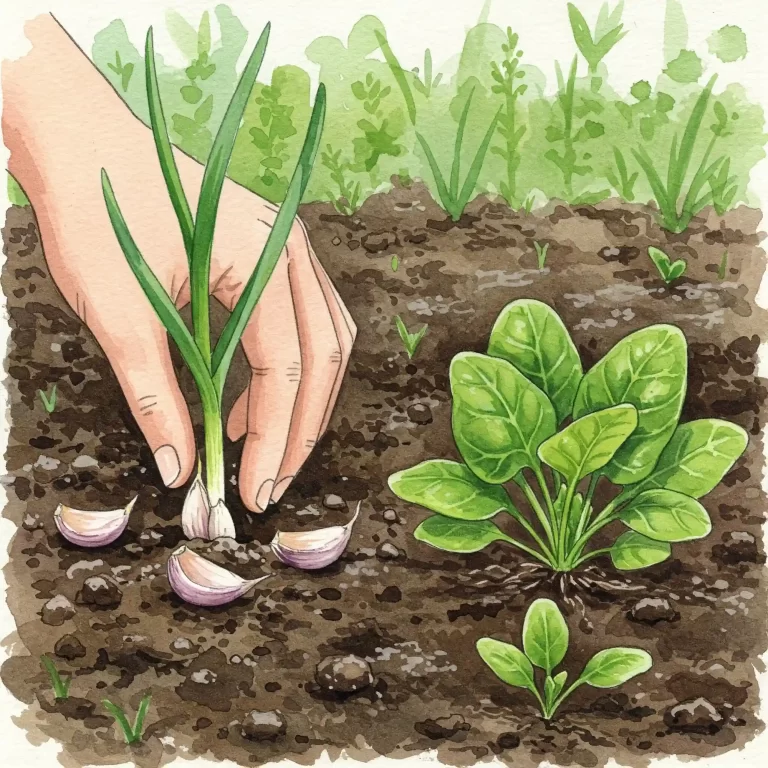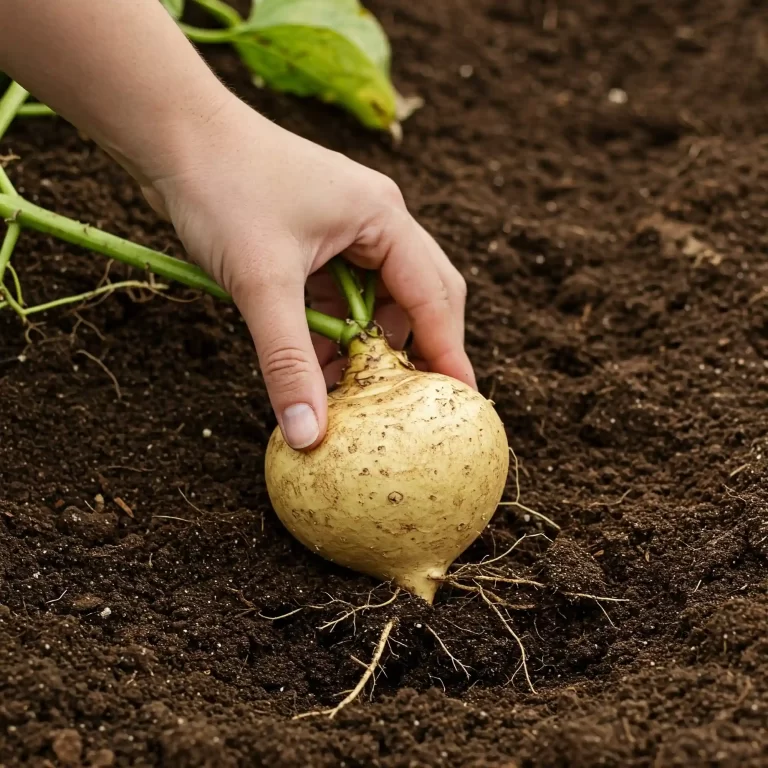Have you ever reached for fresh cilantro to add a burst of flavor to your tacos or curry, only to find a sad, wilted bunch in the back of your fridge? Or perhaps you’ve been frustrated by store-bought coriander seeds that lack the intense aroma you crave? I know I have. It’s a common problem for many home cooks and gardeners. The solution? Growing your own coriander! It’s easier than you might think, and the reward is a constant supply of fresh cilantro leaves and aromatic coriander seeds right at your fingertips. In this guide, I’ll share my experience and knowledge on how to grow coriander vegetable, covering everything from planting to harvesting, so you can enjoy the freshest flavors possible.
Understanding Coriander (Cilantro)
Coriander (Coriandrum sativum) is a versatile herb belonging to the Apiaceae family, which also includes parsley, carrots, and celery. What’s interesting is that this single plant provides us with two distinct culinary elements: cilantro (the fresh leaves) and coriander (the dried seeds). You might know it by different names. In some parts of the world, especially in the US, the leaves are widely known as cilantro, while in other regions, both the leaves and seeds are referred to as coriander. This can sometimes cause confusion, but I promise we will use both terms to make it clear what part of the plant we are talking about.
Coriander’s history is quite fascinating. It’s one of the oldest known herbs, with evidence of its cultivation dating back thousands of years. Originating in the Mediterranean and Middle Eastern regions, coriander has been used for both culinary and medicinal purposes for centuries. The ancient Egyptians used it as a spice and even placed it in tombs. The Romans brought coriander to Europe, where it quickly became a popular ingredient.
Nutritionally, both cilantro and coriander seeds offer several benefits. Cilantro is a good source of vitamins A, C, and K, as well as folate and potassium. Coriander seeds contain dietary fiber, iron, and magnesium. Both are rich in antioxidants, which can help protect your cells from damage.
In the kitchen, cilantro adds a fresh, citrusy flavor to a wide range of dishes, from salsas and guacamole to curries and stir-fries. Coriander seeds, on the other hand, have a warm, spicy, and slightly citrusy flavor that is used in spice blends, curries, and baked goods. I often find myself using both in my cooking – a handful of fresh cilantro to finish a dish and ground coriander to add depth to sauces and stews.
Key Differences Between Cilantro and Coriander Seeds
| Feature | Cilantro (Leaves) | Coriander (Seeds) |
| Part of Plant | Fresh leaves | Dried seeds |
| Flavor | Fresh, citrusy, herbaceous | Warm, spicy, citrusy |
| Use | Fresh garnish, salads, etc. | Spice blends, baking |
| Nutritional Value | Vitamins A, C, K, folate | Fiber, iron, magnesium |
How to Plant Coriander Vegetable
When it comes to planting coriander, you have two main options: starting from seed or using a transplant. While transplants can give you a head start, I recommend starting from seed, as coriander doesn’t always transplant well. Here’s a step-by-step guide to get you started:
1. Timing is Key
Coriander is a cool-season annual, meaning it thrives in temperatures between 50°F and 85°F (10°C and 29°C). If you live in a region with hot summers, it’s best to plant coriander in the spring or fall. In cooler climates, you can plant it in the spring or late summer. I’ve found that timing my planting to avoid the hottest part of the summer helps prevent bolting (premature flowering), which can affect the flavor of the leaves.
2. Soil Preparation
Coriander prefers well-draining soil that is rich in organic matter. Before planting, I like to amend my garden bed with compost or aged manure to improve soil fertility and drainage. You can also add a slow-release organic fertilizer at this time. Aim for a soil pH between 6.2 and 6.8 for optimal growth.
3. Seed Starting
Coriander seeds can be sown directly into the garden or started indoors. If you choose to start them indoors, use biodegradable pots to minimize root disturbance when transplanting. Sow the seeds about ¼ inch deep and keep the soil moist but not waterlogged. Germination typically occurs within 7-10 days.
4. Planting in the Garden
Once your seedlings have developed a few sets of true leaves, you can transplant them into the garden. Choose a location that receives at least 6 hours of sunlight per day. Space the plants about 6 inches apart to allow for adequate air circulation.
5. Container Growing
Coriander can also be grown in containers, which is a great option if you have limited space or want to keep your plants close at hand. Choose a pot that is at least 6 inches deep and has drainage holes. Use a well-draining potting mix and place the container in a sunny location.
Additional Tips for Planting Coriander:
- Coriander seeds have a hard outer shell, which can slow down germination. To speed things up, you can lightly crush the seeds before planting or soak them in water for 24 hours.
- Coriander is a prolific self-seeder, meaning it will readily drop its seeds and produce new plants. If you want to prevent this, harvest the seeds before they mature and fall to the ground.
- Coriander is a relatively low-maintenance plant, but it does benefit from regular watering and occasional fertilization. Be sure to water deeply whenever the top inch of soil feels dry.
How to Grow and Care for Coriander
Now that you have your coriander planted, let’s dive into how to care for it and ensure a bountiful harvest of both cilantro and coriander seeds. This is where you nurture your plants and help them reach their full potential.
Sunlight: Coriander thrives in full sun, requiring at least 6 hours of direct sunlight per day. However, in hotter climates, some afternoon shade can be beneficial to prevent bolting. I’ve noticed that providing some protection from the intense midday sun in my own garden helps extend the harvest period of the cilantro. If you’re growing in containers, you can easily move them to a shadier spot during the hottest part of the day.
Watering: Consistent moisture is crucial for coriander. Water deeply whenever the top inch of soil feels dry to the touch. Avoid overhead watering, as this can promote fungal diseases. Instead, water at the base of the plant, focusing on the soil. I find that checking the soil moisture every other day is a good practice, especially during hot and dry periods. You can use your finger to test the soil – if the top inch feels dry, it’s time to water.
Fertilizing: While coriander isn’t a heavy feeder, a light application of balanced liquid fertilizer every few weeks can promote healthy growth, especially if you’re harvesting leaves regularly. I prefer using organic fertilizers like compost tea or fish emulsion, as they provide a slow release of nutrients and improve soil health. Avoid over-fertilizing, as this can lead to excessive foliage growth at the expense of flavor, and can even encourage bolting.
Temperature and Humidity: As a cool-season crop, coriander prefers temperatures between 50°F and 85°F (10°C and 29°C). High temperatures, particularly combined with dry conditions, can trigger bolting, which makes the cilantro leaves bitter. If you live in a hot climate, focus on providing shade and consistent moisture. Coriander also prefers moderate humidity. Extremely dry air can stress the plants.
Preventing Bolting: Bolting, or premature flowering, is a common problem with coriander, especially in hot weather. Once the plant bolts, the leaves become bitter and the plant focuses its energy on seed production. Here are some tips to prevent bolting and extend your cilantro harvest:
- Plant at the right time: As mentioned earlier, plant in the spring or fall to avoid the hottest part of the summer.
- Provide shade: In hot climates, provide some afternoon shade using shade cloth or by planting coriander near taller plants.
- Water consistently: Consistent moisture is key to preventing stress and bolting.
- Choose bolt-resistant varieties: Some coriander varieties are bred to be more resistant to bolting, such as ‘Santo’ or ‘Leisure.’ These are often a good choice for warmer climates.
- Succession planting: Plant new seeds every few weeks to ensure a continuous harvest of fresh cilantro. This way, you have a fresh supply even if some plants bolt. I’ve found this to be particularly helpful in my own garden during the summer months.
Pest and Disease Control: Coriander is generally a low-maintenance plant when it comes to pests and diseases. However, there are a few common issues you might encounter:
- Aphids: These small, sap-sucking insects can cluster on new growth. A strong spray of water from your garden hose can often dislodge them. You can also use insecticidal soap or neem oil for more severe infestations.
- Spider Mites: These tiny mites thrive in hot, dry conditions. They can cause stippling on the leaves. Increase humidity around the plants by misting them with water or placing a tray of water near them. Insecticidal soap or neem oil can also be effective.
- Powdery Mildew: This fungal disease appears as a white, powdery coating on the leaves. Good air circulation and avoiding overhead watering can help prevent it. If you see signs of powdery mildew, you can treat it with a fungicide.
Troubleshooting Table
| Problem | Possible Cause(s) | Solution(s) |
| Yellowing Leaves | Overwatering, nutrient deficiency, disease | Check soil moisture, ensure proper drainage, fertilize with a balanced fertilizer, treat with appropriate fungicide |
| Slow Growth | Insufficient sunlight, poor soil, low temperatures | Ensure at least 6 hours of sunlight, amend soil with compost, provide warmer conditions if necessary |
| Bolting | High temperatures, dry conditions, stress | Plant at the right time, provide shade, water consistently, choose bolt-resistant varieties, succession planting |
| Aphids | Warm weather, overcrowding | Strong spray of water, insecticidal soap, neem oil |
| Spider Mites | Hot, dry conditions | Increase humidity, insecticidal soap, neem oil |
| Powdery Mildew | Humid conditions, poor air circulation | Improve air circulation, avoid overhead watering, treat with fungicide |
How to Harvest Coriander
Knowing when and how to harvest your coriander is essential for enjoying its fresh flavor and collecting seeds for future plantings. It’s truly rewarding to use homegrown herbs in your cooking, and coriander is no exception.
Harvesting Cilantro Leaves:
You can begin harvesting cilantro leaves once the plants are about 6-8 inches tall. This is usually about 4-6 weeks after planting. I prefer to harvest the outer leaves first, allowing the inner leaves to continue growing. This encourages continuous production of cilantro throughout the growing season. Here are some tips for harvesting cilantro:
- Use sharp scissors or pruning shears: This will ensure a clean cut and prevent damage to the plant.
- Harvest in the morning: The leaves are at their freshest in the morning, after the dew has dried.
- Don’t harvest more than one-third of the plant at a time: This will allow the plant to continue growing and producing new leaves.
- Regular harvesting prevents bolting: By regularly harvesting the leaves, you can delay bolting and extend the harvest period.
Harvesting Coriander Seeds:
If you want to collect coriander seeds, allow some of your plants to flower and go to seed. Once the flowers fade and the seed heads begin to turn brown and dry, you can harvest them. Here’s how:
- Cut the seed heads: Use sharp scissors or pruning shears to cut the seed heads from the plant.
- Dry the seed heads: Place the seed heads in a paper bag or on a tray in a warm, dry place for a few weeks to allow them to dry completely.
- Separate the seeds: Once the seed heads are dry, you can gently rub them between your hands to release the seeds.
- Store the seeds: Store the dried seeds in an airtight container in a cool, dry place.
Harvesting for Continuous Supply:
To ensure a continuous supply of both cilantro and coriander seeds, I recommend succession planting. This involves planting new seeds every few weeks. This way, you’ll always have young plants producing fresh cilantro leaves, while older plants can be allowed to go to seed. This is a practice I’ve found invaluable in my own garden. By following these harvesting tips, you can enjoy fresh cilantro throughout the growing season and collect coriander seeds for future plantings and culinary use.
Troubleshooting Common Coriander Problems
Even with the best care, you might encounter some common problems when growing coriander. Don’t worry, though! Most of these issues are easily addressed with a little know-how. I’ve certainly had my share of coriander conundrums over the years, and I’m here to share what I’ve learned.
Yellowing Leaves: One of the most frequent issues I see is yellowing leaves. This can be caused by several factors:
- Overwatering: Coriander prefers consistently moist soil, but it doesn’t like to be waterlogged. Overwatering can lead to root rot, which can cause the leaves to yellow.
- Nutrient Deficiency: A lack of essential nutrients, such as nitrogen or iron, can also cause yellowing leaves.
- Disease: Fungal diseases, such as Fusarium wilt, can also cause yellowing and wilting.
Slow Growth: If your coriander plants seem to be growing slowly, there could be a few reasons:
- Insufficient Sunlight: Coriander needs at least 6 hours of sunlight per day to thrive.
- Poor Soil: Poor soil quality can limit nutrient availability and hinder growth.
- Low Temperatures: Coriander is a cool-season crop and prefers temperatures between 50°F and 85°F (10°C and 29°C).
Bolting: As I’ve mentioned before, bolting (premature flowering) is a common problem with coriander, especially in hot weather. Once the plant bolts, the leaves become bitter.
Pest Infestations: While coriander is relatively pest-free, aphids and spider mites can sometimes be a nuisance.
Troubleshooting Table
| Problem | Possible Cause(s) | Solution(s) |
| Yellowing Leaves | Overwatering, nutrient deficiency, disease | Check soil moisture, ensure proper drainage, fertilize with a balanced fertilizer, treat with appropriate fungicide |
| Slow Growth | Insufficient sunlight, poor soil, low temperatures | Ensure at least 6 hours of sunlight, amend soil with compost, provide warmer conditions if necessary |
| Bolting | High temperatures, dry conditions, stress | Plant at the right time, provide shade, water consistently, choose bolt-resistant varieties, succession planting |
| Aphids | Warm weather, overcrowding | Strong spray of water, insecticidal soap, neem oil |
| Spider Mites | Hot, dry conditions | Increase humidity, insecticidal soap, neem oil |
| Powdery Mildew | Humid conditions, poor air circulation | Improve air circulation, avoid overhead watering, treat with fungicide |
FAQs
To further assist you in your coriander-growing journey, I’ve compiled a list of frequently asked questions:
- How long does it take to grow coriander from seed?
- Coriander typically germinates within 7-10 days. You can start harvesting cilantro leaves about 4-6 weeks after planting.
- How often should I water my coriander plant?
- Water deeply whenever the top inch of soil feels dry to the touch. Avoid overwatering.
- How to grow coriander vegetable in pots indoors during winter?
- Choose a pot that is at least 6 inches deep and has drainage holes. Use a well-draining potting mix and place the pot in a sunny window. Water regularly and fertilize lightly every few weeks.
- How to grow coriander vegetable and prevent it from bolting in summer?
- Plant in the spring or fall to avoid the hottest part of the summer. Provide some afternoon shade, water consistently, choose bolt-resistant varieties, and practice succession planting.
- Can I grow coriander from store-bought cilantro?
- Yes, you can try rooting cilantro stems in water. However, this method is not always successful. It’s generally easier to start from seed.
- What is the best way to grow coriander vegetable for continuous harvest?
- Succession planting is the best way to ensure a continuous harvest of cilantro. Plant new seeds every few weeks.
- How to grow coriander vegetable and protect it from common garden pests?
- Regularly inspect your plants for pests. Use a strong spray of water, insecticidal soap, or neem oil to control aphids and spider mites.
- Is coriander easy to grow for beginners?
- Yes, coriander is relatively easy to grow, making it a great choice for beginner gardeners.
- How to store coriander leaves and seeds?
- Store fresh cilantro leaves in the refrigerator, wrapped in a damp paper towel. Dried coriander seeds should be stored in an airtight container in a cool, dry place.
Conclusion
Growing your own coriander can be a rewarding experience. With a little care and attention, you can enjoy a continuous supply of fresh cilantro leaves and aromatic coriander seeds right from your garden. I encourage you to give it a try and experience the joy of growing your own herbs.
I hope this guide has provided you with the knowledge and confidence to start your own coriander garden. Happy gardening!
